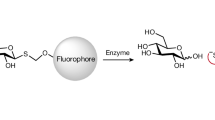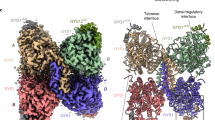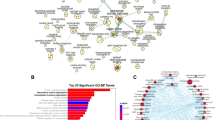Abstract
We constructed structural models of the catalytic domain and the surrounding region of human wild-type acid α-glucosidase and the enzyme with amino acid substitutions by means of homology modeling, and examined whether the amino acid replacements caused structural and biochemical changes in the enzyme proteins. Missense mutations including p.R600C, p.S619R and p.R437C are predicted to cause apparent structural changes. Nonsense mutation of p.C103X terminates the translation of acid α-glucosidase halfway through its biosynthesis and is deduced not to allow formation of the active site pocket. The mutant proteins resulting from these missense and nonsense mutations found in patients with Pompe disease are predictably unstable and degraded quickly in cells. The structural change caused by p.G576S is predicted to be small, and cells from a subject homozygous for this amino acid substitution exhibited 15 and 11% of the normal enzyme activity levels for an artificial substrate and glycogen, respectively, and corresponding amounts of the enzyme protein on Western blotting. No accumulation of glycogen was found in organs including skeletal muscle in the subject, and thus the residual enzyme activity could protect cells from glycogen storage. On the other hand, p.E689K, which is known as a neutral polymorphism, little affected the three-dimensional structure of acid α-glucosidase. Structural study on a mutant acid α-glucosidase in silico combined with biochemical investigation is useful for understanding the molecular pathology of Pompe disease.
Similar content being viewed by others
Log in or create a free account to read this content
Gain free access to this article, as well as selected content from this journal and more on nature.com
or
References
Davies G, Henrissat B (1995) Structures and mechanisms of glycosyl hydrolases. Structure 3:853–859
Ernst HA, Leggio LL, Willemoës M, Leonard G, Blum P, Larsen S (2006) Structure of the Sulfolobus solfataricus α-glucosidase: implications for domain conservation and substrate recognition in GH31. J Mol Biol 358:1106–1124
Hasilik A, Neufeld EF (1980) Biosynthesis of lysosomal enzymes in fibroblasts. Phosphorylation of mannose residues. J Biol Chem 255:4946–4950
Hermans MM, van Leenen D, Kroos MA, Beesley CE, Van Der Ploeg AT, Sakuraba H, Wevers R, Kleijer W, Michelakakis H, Kirk EP, Fletcher J, Bosshard N, Basel-Vanagaite L, Besley G, Reuser AJ (2004) Twenty-two novel mutations in the lysosomal alpha-glucosidase gene (GAA) underscore the genotype-phenotype correlation in glycogen storage disease type II. Hum Mutat 23:47–56
Hirschhorn R, Reuser AJJ (2001) Glycogen storage disease type II: acid alpha-glucosidase (acid maltase) deficiency. In: Scriver CR, Beaudet AL, Sly WS, Valle D (eds) The metabolic and molecular bases of inherited disease. 8th edn. McGraw-Hill, New York, pp 3389–3420
Hoefsloot LH, Hoogeveen-Westerveld M, Kroos MA, van Beeumen J, Reuser AJ, Oostra BA (1988) Primary structure and processing of lysosomal alpha-glucosidase; homology with the intestinal sucrase-isomaltase complex. EMBO J 7:1697–1704
Hoefsloot LH, Hoogeveen-Westerveld M, Reuser AJ, Oostra BA (1990) Characterization of the human lysosomal alpha-glucosidase gene. Biochem J 272:493–497
Huie ML, Menaker M, McAlpine PJ, Hirschhorn R (1996) Identification of an E689K substitution as the molecular basis of the human acid alpha-glucosidase type 4 allozyme (GAA*4). Ann Hum Genet 60:365–368
Kabsch W (1976) A solution for the best rotation to relate two sets of vectors. Acta Cryst A32:922–923
Kabsch W (1978) A discussion of the solution for the best rotation to relate two sets of vectors. Acta Cryst A34:827–828
Kanazawa N, Miyamoto T, Ihara K, Miyoshi Y, Sakai N, Inui K, Hagiwara K, Kawamoto M, Kouhara N, Sasaki M, Sugie H, Sakai F, Tsujino S (2003) Novel mutation and a frequent mutation in Japanese juvenile patients with acid maltase deficiency. J Inher Metab Dis 26(Supple 2):310
Kishnani PS, Nicolino M, Voit T, Rogers RC, Tsai AC, Waterson J, Herman GE, Amalfitano A, Thurberg BL, Richards S, Davison M, Corzo D, Chen YT (2006) Chinese hamster ovary cell-derived recombinant human acid alpha-glucosidase in infantile-onset Pompe disease. J Pediatr 149:89–97
Klinge L, Straub V, Neudorf U, Schaper J, Bosbach T, Gorlinger K, Wallot M, Richards S, Voit T (2005) Safety and efficacy of recombinant acid alpha-glucosidase (rhGAA) in patients with classical infantile Pompe disease: results of a phase II clinical trial. Neuromuscul Disord 15:24–31
Lovering AL, Lee SS, Kim YW, Withers SG, Strynadka NC (2005) Mechanistic and structural analysis of a family 31 alpha-glycosidase and its glycosyl-enzyme intermediate. J Biol Chem 280:2105–2115
Martiniuk F, Bodkin M, Tzall S, Hirschhorn R (1991) Isolation and partial characterization of the structural gene for human acid alpha glucosidase. DNA Cell Biol 10:283–292
Martiniuk F, Mehler M, Pellicer A, Tzall S, La Badie G, Hobart C, Ellenbogen A, Hirschhorn R (1986) Isolation of a cDNA for human acid alpha-glucosidase and detection of genetic heterogeneity for mRNA in three alpha-glucosidase-deficient patients. Proc Natl Acad Sci USA 83:9641–9644
Moreland RJ, Jin X, Zhang XK, Decker RW, Albee KL, Lee KL, Cauthron RD, Brewer K, Edmunds T, Canfield WM (2005) Lysosomal acid alpha-glucosidase consists of four different peptides processed from a single chain precursor. J Biol Chem 280:6780–6791
Okumiya T, Jiao Y, Saibara T, Miike A, Park K, Kageoka T, Sasaki M (1998) Sensitive enzymatic assay for erythrocyte creatine with production of methylene blue. Clin Chem 44:1489–1496
Reuser AJ, Kroos M, Oude Elferink RP, Tager JM (1985) Defects in synthesis, phosphorylation, and maturation of acid alpha-glucosidase in glycogenosis type II. J Biol Chem 260:8336–8341
Reuser AJ, Kroos M, Willemsen R, Swallow D, Tager JM, Galjaard H (1987) Clinical diversity in glycogenosis type II. Biosynthesis and in situ localization of acid alpha-glucosidase in mutant fibroblasts. J Clin Invest 79:1689–1699
Shieh JJ, Lin CY (1998) Frequent mutation in Chinese patients with infantile type of GSD II in Taiwan: evidence for a founder effect. Hum Mutat 11:306–312
Suzuki Y, Tsuji A, Omura K, Nakamura G, Awa S, Kroos M, Reuser AJ (1988) Km mutant of acid alpha-glucosidase in a case of cardiomyopathy without signs of skeletal muscle involvement. Clin Genet 33:376–385
Tsuji A, Suzuki Y (1987) The precursor of acid alpha-glucosidase is synthesized as a membrane-bound enzyme. Biochem Int 15:945–952
Tsujino S, Huie M, Kanazawa N, Sugie H, Goto Y, Kawai M, Nonaka I, Hirschhorn R, Sakuragawa N (2000) Frequent mutations in Japanese patients with acid maltase deficiency. Neuromuscul Disord 10:599–603
Tsunoda H, Ohshima T, Tohyama J, Sasaki M, Sakuragawa N, Martiniuk F (1996) Acid alpha-glucosidase deficiency: identification and expression of a missense mutation (S529V) in a Japanese adult phenotype. Hum Genet 97:496–499
Van den Hout JM, Kamphoven JH, Winkel LP, Arts WF, De Klerk JB, Loonen MC, Vulto AG, Cromme-Dijkhuis A, Weisglas-Kuperus N, Hop W, Van Hirtum H, Van Diggelen OP, Boer M, Kroos MA, Van Doorn PA, Van der Voort E, Sibbles B, Van Corven EJ, Brakenhoff JP, Van Hove J, Smeitink JA, de Jong G, Reuser AJ, Van der Ploeg AT (2004) Long-term intravenous treatment of Pompe disease with recombinant human alpha-glucosidase from milk. Pediatrics 113:e448–457
Weiner SJ, Kallman PA, Case DA, Singh UC, Ghio C, Alagona G, Profeta S, Weiner P (1984) A new force field for molecular mechanical simulation of nucleic acids and proteins. J Am Chem Soc 106:765–784
Wisselaar HA, Kroos MA, Hermans MM, van Beeumen J, Reuser AJ (1993) Structural and functional changes of lysosomal acid alpha-glucosidase during intracellular transport and maturation. J Biol Chem 268:2223–2231
Acknowledgments
We thank Dr. W.L. Hwu (Department of Pediatrics and Medical Genetics, National Taiwan University Hospital, Taipei, Taiwan) and Dr. A.J.J. Reuser (Department of Clinical Genetics, Ersmus MC, Rotterdam, The Netherlands) for the valuable discussions. This work was partly supported by grants from the Japan Society for the Promotion of Science, the Ministry of Education, Science, Sports and Culture of Japan, the Ministry of Health, Labor and Welfare of Japan, the Japan Science and Technology Agency, and CREST.
Author information
Authors and Affiliations
Corresponding author
Additional information
Conflict of interest: T.E. is an employee of Genzyme Corporation.
Rights and permissions
About this article
Cite this article
Tajima, Y., Matsuzawa, F., Aikawa, Si. et al. Structural and biochemical studies on Pompe disease and a “pseudodeficiency of acid α-glucosidase”. J Hum Genet 52, 898–906 (2007). https://doi.org/10.1007/s10038-007-0191-9
Received:
Accepted:
Published:
Issue date:
DOI: https://doi.org/10.1007/s10038-007-0191-9
Keywords
This article is cited by
-
Enzymatic diagnosis of Pompe disease: lessons from 28 years of experience
European Journal of Human Genetics (2021)
-
Pharmacological Enhancement of α-Glucosidase by the Allosteric Chaperone N-acetylcysteine
Molecular Therapy (2012)
-
Biochemical and structural study on a S529V mutant acid α-glucosidase responsive to pharmacological chaperones
Journal of Human Genetics (2011)
-
Structural modeling of mutant α-glucosidases resulting in a processing/transport defect in Pompe disease
Journal of Human Genetics (2009)
-
p.[G576S; E689K]: pathogenic combination or polymorphism in Pompe disease?
European Journal of Human Genetics (2008)



